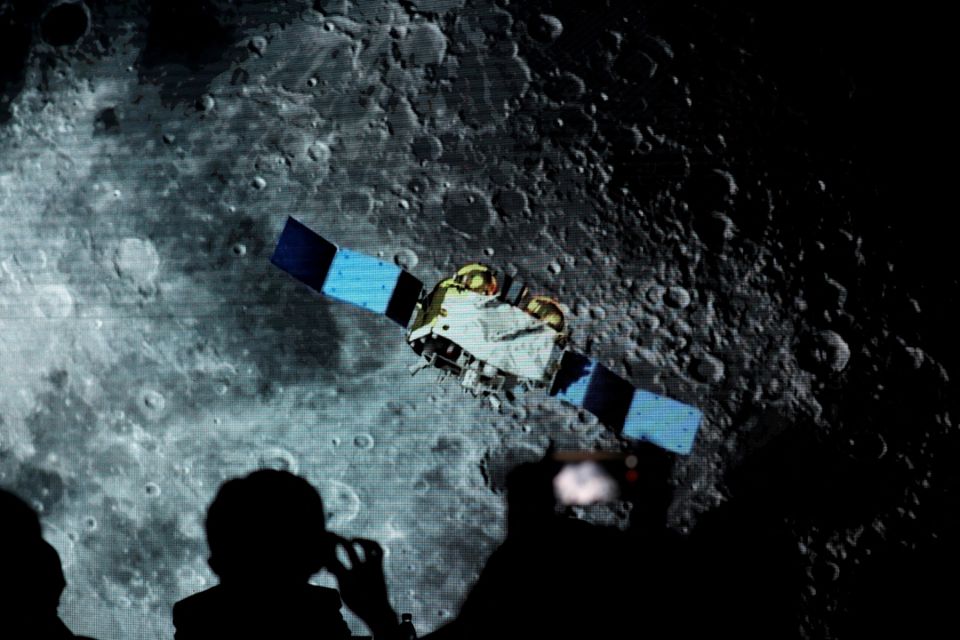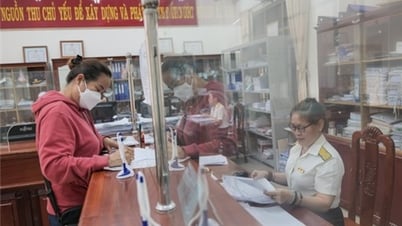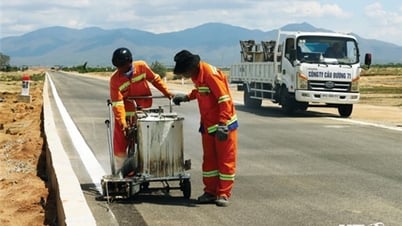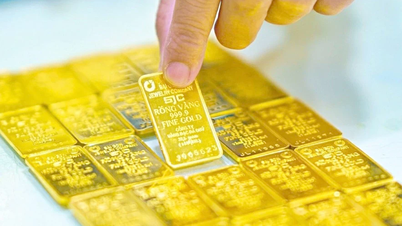According to The Guardian (UK), the new discovery is considered one of the most important breakthroughs for space agencies aiming to build bases on the Moon. This means that the Moon's surface contains not only water but also hydrogen and oxygen.
“This is one of the most exciting discoveries we have ever made,” said Mahesh Anand, Professor of Planetary Science and Exploration at the Open University. “With this discovery, the potential for sustainable exploration of the Moon is greater than ever.”
More than half a century after humans last set foot on the moon, NASA and other space agencies are preparing for a return mission. NASA’s Artemis mission aims to land the first woman and first person of color on the moon, while the European Space Agency plans to build a lunar village. Both hope to use lunar materials to sustain bases off Earth.
Video of the Chang'e-5 spacecraft is shown during an event on China's lunar exploration program at the National Astronomical Observatories of the Chinese Academy of Sciences (CAS) in Beijing, China. Photo: Reuters
Anand and a team of Chinese scientists analyzed fine glass particles from lunar soil samples brought back to Earth by China’s Chang’e-5 mission in December 2020. The particles, less than 1 millimeter in diameter, formed when meteorites crashed into the moon and created a shower of molten droplets. These droplets then solidified and mixed with lunar dust.
Tests on the glass beads showed that they contained significant amounts of water, ranging from 300 million to 270 billion tons over the entire surface of the Moon.
“This discovery opens up new avenues that many of us have been thinking about. If we can extract water and concentrate it in significant quantities, then how we use it is up to us,” said Anand.
The idea that the Moon might not be an entirely barren wasteland has been around since earlier missions. In the 1990s, NASA’s Clementine orbiter found evidence of water ice in deep, steep-sided craters near the Moon’s poles. In 2009, India’s Chandrayaan-1 spacecraft detected what appeared to be a thin layer of water in lunar dust on the surface.
The latest research, published in the journal Nature Geoscience, points to fine glass particles as the source of that surface water. Unlike frozen water in craters, it would be much easier for humans or robots working on the Moon to mine.
“There is evidence that when the temperature of this material exceeds 100 degrees Celsius, it will start to melt and can be mined,” said Mr. Anand.
Ian Crawford, Professor of Planetary Science and Astrobiology at Birkbeck, University of London, said the new discovery reinforces the hypothesis that the Moon is richer in water than previously thought.
“Lunar water reservoirs could prove a useful resource in areas far from polar ice deposits. However, we should not overestimate the amount of water present, which is at most 130 ml/m3 of lunar soil,” he said.
According to VNA/Tin Tuc Newspaper
Source link





![[Photo] National Conference "100 years of Vietnamese Revolutionary Press accompanying the glorious cause of the Party and the nation"](https://vphoto.vietnam.vn/thumb/1200x675/vietnam/resource/IMAGE/2025/5/30/1cf6cd5c8a934ebfa347028dcb08358c)
![[Photo] A delegation of 100 journalists from the Vietnam Journalists Association visits the soldiers and people of Truong Sa island district.](https://vphoto.vietnam.vn/thumb/1200x675/vietnam/resource/IMAGE/2025/5/30/0984a986227d4e988177f560d2e1563e)
![[Photo] Journalists moved to tears at the Memorial Service for the soldiers who died in Gac Ma](https://vphoto.vietnam.vn/thumb/1200x675/vietnam/resource/IMAGE/2025/5/30/9454613a55c54c16bf8c0efa51883456)
![[Photo] General Secretary To Lam receives Chief of the Central Office of the Lao People's Revolutionary Party](https://vphoto.vietnam.vn/thumb/1200x675/vietnam/resource/IMAGE/2025/5/30/140435f4b39d4599a3d17975dfb444c5)















































































Comment (0)